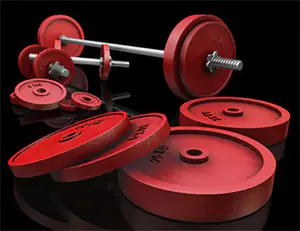In order for results in the snatch and clean and jerk to increase continuously and evenly, it is necessary to plan a constant increase in indicators in special auxiliary exercises. These indicators characterize the level of special physical fitness of the athlete at certain stages and serve as the basis for achieving the intended results in classical exercises. It is advisable to plan such indicators for those three training cycles in which preparation for the most important competitions is carried out. At the same time, by the end of the year, achievements are planned that correspond to the athlete’s future qualifications.
Lagging results in the clean and jerk are possible for the following reasons.
- The athlete lifts the barbell to his chest and stands with it from a squat, but does not push it away from his chest. In this case, he needs to increase the proportion of special auxiliary exercises that help improve the chest push.
- The athlete has difficulty getting up from a squat, and he has no strength left to push from the chest. In this case, you should further increase the number of barbell squats.
- An athlete cannot lift a barbell weighing 160 kg, but gets up from a squat with a significantly larger weight (and his result in a half-squat clean is less than 142.5 kg). This means he has a low level of speed-strength fitness. It is necessary to increase the proportion of specially auxiliary pushing exercises - push pulls and other exercises that develop these qualities.
- An athlete lifts a 160 kg barbell to his chest, but cannot get up from a squat. Naturally, he needs to increase the proportion of barbell squats, even if the result is 202.5 kg. In this case (due to individual characteristics), his result in squats should be slightly higher - up to 210 kg (126.3 + 6%).
When the results in squats with a barbell lag behind the optimal values, increase the share of these exercises in the total training volume. If the achievements in squats with a barbell exceed the optimal values, then the load in them is reduced. You should not achieve very significant results in squats with a barbell.
The approximate increase in achievements of an average weight athlete (height - 168 cm) is shown in the table in this article. For an athlete of the first sports category, by the end of the year the result in the snatch is 130 kg, in the clean and jerk - 165. From the table, for example, it is clear: in order to successfully push a barbell weighing 165 kg by the end of the year, the athlete needs to achieve a result of 142 in lifting the barbell to the chest with a semi-squat, 5-145 kg, in squats - 210 and in push-and-jerk - 150-152.5 kg. If these indicators are achieved, you can count on success in the clean and jerk—165 kg.
Post Views: 107


